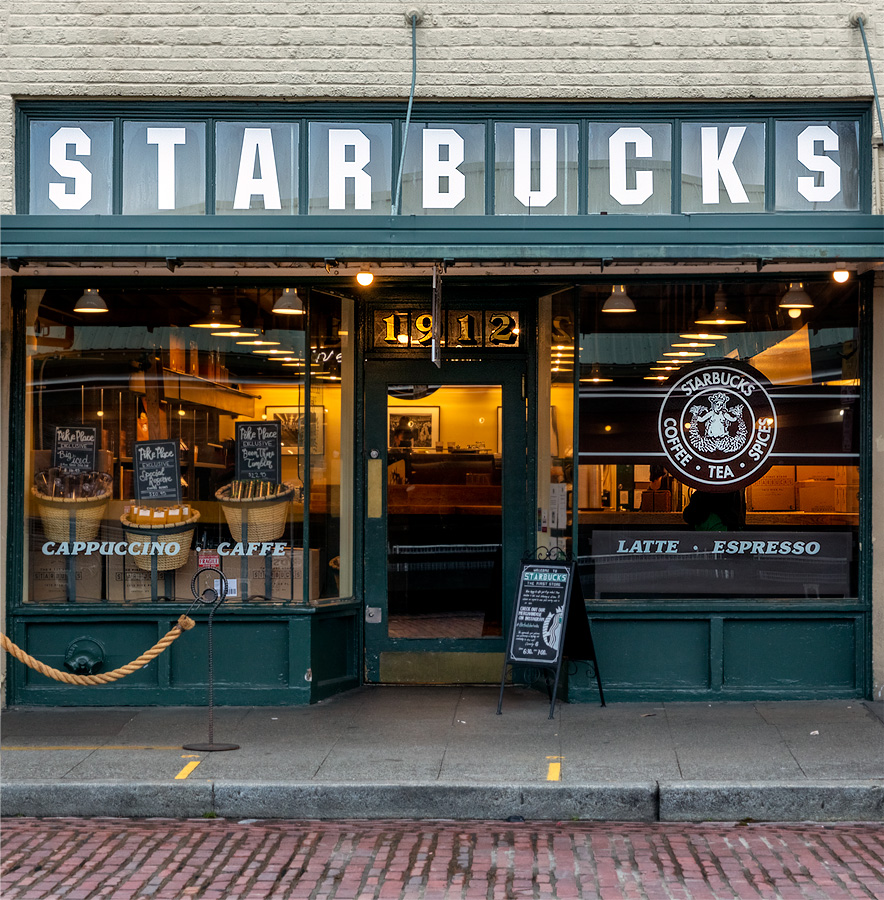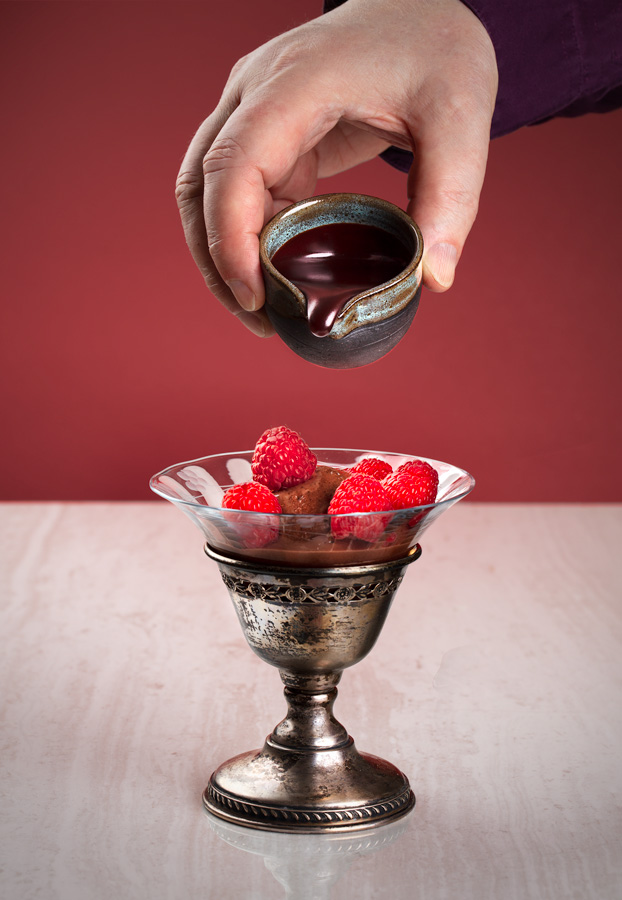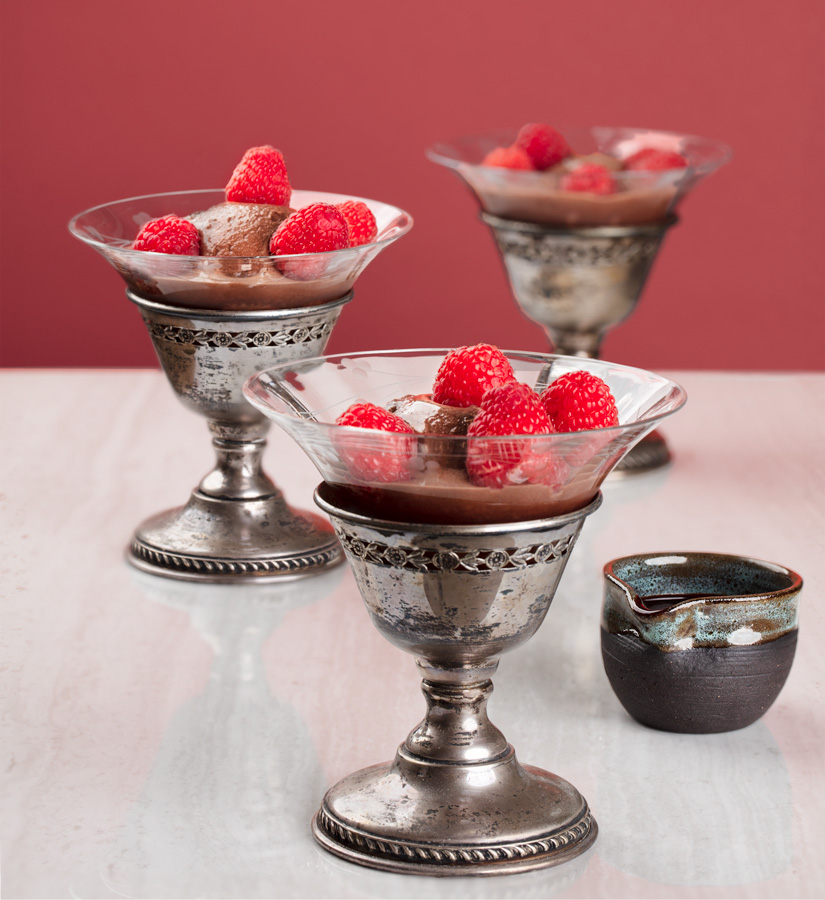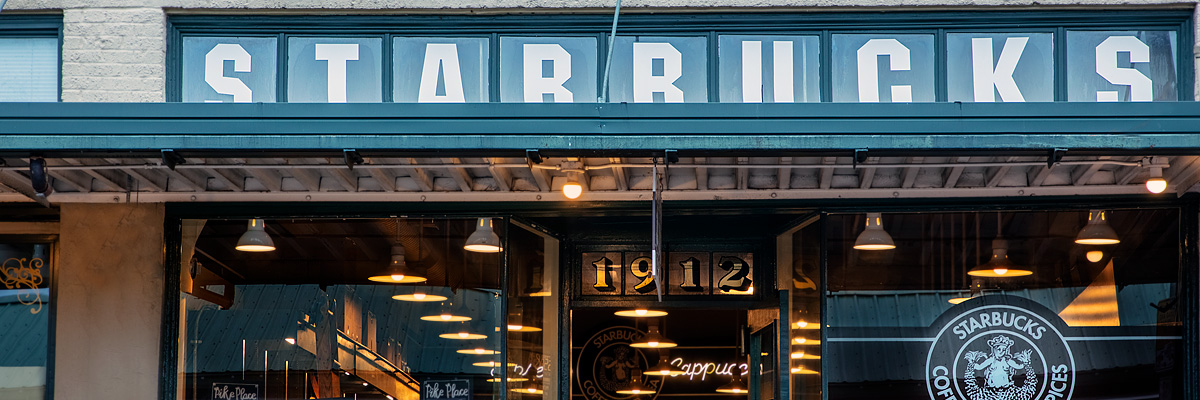Starbucks Turns 50, and Using Coffee as a Secret Ingredient
Fifty years ago today Starbucks opened its doors for the first time. Almost no one noticed.
It chose a humble storefront in what at the time was a pretty crappy part of downtown Seattle. In an area sandwiched between adult movie theatres to its East and the vendor stalls for the nearly-bankrupt Pike Place Market across the street to its West, Starbucks’ location didn’t get a lot of upscale foot traffic looking for espresso.

But as a fledgling outfit it had several advantages stemming from three early, brilliant decisions. First, what was initially a cheap, unattractive location would, within just a few years, become wildly popular. Six months after Starbucks opened, the Pike Place Market became an historic preservation zone. In the ensuing years all of its buildings would be restored to their historic glory. The Market became one of the most popular tourist destinations in Seattle, attracting millions of locals and visitors every year. And the first thing a lot of those people want when they arrive at the Market is a cup of Starbucks coffee.
Second, there’s a lot of profit to every cup of what is essentially flavored water when you can sell it for a couple of bucks a pop. So Starbucks invented the idea of not selling cups of coffee. Instead, they sell the experience of buying a cup of coffee.
And third, Starbucks implemented the idea of sourcing premium coffee beans and then roasting the crap out of them. On paper, that idea made no sense at all. Heavily roasting coffee beans was something producers and coffee houses did with inferior beans. The characteristics of great coffee beans are best experienced with light roasts, where their nuances are apparent. A light roasting of inferior beans results in a drink dominated by the flaws endemic to lesser beans. Dark roasting hides both the nuances (which cheap coffee beans don’t have much of to begin with) and the flaws (which was always the point of over-roasted cheap beans).
Starbucks wasn’t the first to sell coffee from dark roasted premium beans. Peet’s Coffee in Berkeley was out ahead of them by just a handful of years. But Starbucks pushed the idea more effectively than anyone, and reaped the benefits. Their headquarters has now grown from the shoestring space of a startup to something that’s pretty monumental:

Other than that short tribute to Starbucks, though, this post isn’t about selling coffee. It’s about cooking with coffee. Or to be more precise, it’s about incorporating the flavor of coffee in a way that’s rarely done, and rarely talked about.
Coffee, it turns out, is the ultimate silent partner to chocolate. I have yet to find a recipe featuring chocolate that wasn’t made better with a little coffee flavoring: Not enough to make the result taste of coffee, but instead just enough so the chocolate tastes like a more potent version of itself.

Adding just a hint of coffee to chocolate recipes is like turning monophonic sound into stereo. Coffee flavor behind chocolate is like Ray Brown behind Oscar Peterson. It’s Alfred to the Batman. It’s Art Garfunkel to Paul Simon. You get the idea.
But brewed coffee or espresso isn’t a great medium to inject coffee flavor into cooking. Both add too much water and not enough flavor. Freeze dried coffee is a much more effective form to use as long as the recipe has enough liquid that the crystals dissolve. Starbucks sells a ton of varieties, but the brand of freeze dried coffee stocked in most grocery stores comes from a corner of the United States diametrically opposite to Seattle, commonly known as “Miami.”
Although the freeze dried form almost always works well, I prefer using coffee extract. It blends seamlessly into everything without the chance of undissolved granules in the finished dish. Both extract and freeze dried coffee have about the same intensity, so a teaspoon of one should be interchangeable with a teaspoonful of the other.
A great way to discover how fantastic coffee is at enhancing chocolate flavors is to take a simple, bulletproof chocolate recipe and make two batches of it: One with just chocolate, and a second batch with some coffee flavoring added. Then taste them side by side.
Here are two such recipes. The first is a chocolate gelato. High acyl gellan is a listed ingredient, but isn’t a necessary one. Gellan is a vegan alternate to gelatin in many applications, and while it’s a bit exotic for a home kitchen, it’s cheap, lasts forever, and gives extra body to ice cream and gelato. If you don’t want to bother with it, just leave it out.
The second recipe is for chocolate sauce (which, totally by coincidence, goes great with chocolate gelato). It’s a snap to make. The only tough decision you face is whether to make it a thin sauce or a thick one, the difference hinging on how much water you use. If you opt for the thick one and chill it in the refrigerator it has the texture of dense frosting. The thin version, at room temperature, has the consistency of heavy cream.

Chocolate Gelato Recipe
Serves 4-6
2/3 c (133 g) sugar
3 T (15 g) cocoa powder
1/3 c (40 g) c sweet buttermilk solids
0.6 g (0.2%) high acyl gellan (optional)
1/8 t (1 g) salt
1 1/4 c (300 g) water
3/4 t coffee extract
1/4 t vanilla extract
Combine the sugar, cocoa, milk solids, salt, and gellan (if using it) in a bowl and whisk them to combine. Put the water in a blender, and while at low speed add the dry ingredients. Turn the blender up to medium speed for twenty or thirty seconds. Pour the mixture into a medium saucepan, bring it to a simmer and hold it at a simmer for 2 minutes, stirring occasionally.
Turn off the heat, stir in the extracts, strain, and then chill the mixture for at least four hours in the refrigerator. (In ice cream making parlance, this is the “aging” stage for the mix, and results in better tasting ice creams and gelatos.) Then process the mix in an ice cream maker and freeze it at least 12-18 hours so it fully sets up.
Chocolate Sauce Recipe
Serves 8-12
1/4 to 1/2 c (60-120 g) water (use up to half a cup of water for a thin sauce, or as little as a quarter cup for a very thick sauce)
1/8 t (0.7 g) salt
1/2 c (165 g) honey, light corn syrup, agave nectar, maple syrup, or golden syrup
3 T (15 g) cocoa powder
1/4 lb. bittersweet or semisweet chocolate, roughly chopped
8 T (1 stick) butter
1/2 t coffee extract
1/4 t vanilla extract
Bring the water, salt, sweetener, and cocoa to a bare simmer, whisking to prevent scorching. Remove the pot from the heat, add the chocolate pieces and stir to melt, then add the butter one or two pieces at a time, stirring until each piece of butter is melted before adding the next piece, until everything is incorporated. Cool to room temperature and serve, or chill before serving to make the sauce much thicker.


Like this Recipe? Leave a Comment.
Your email address will not be published.